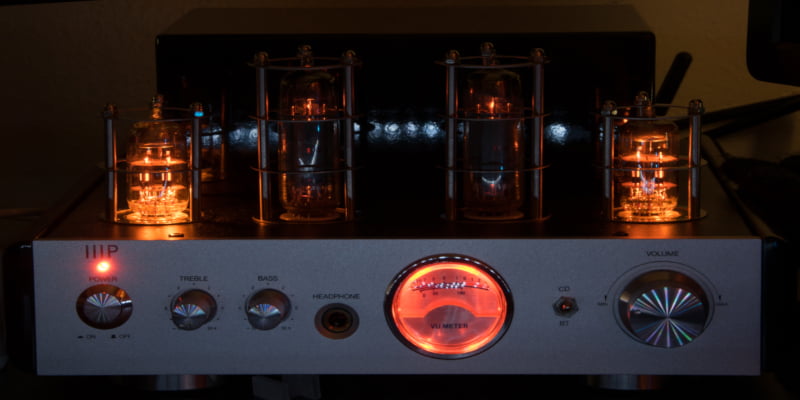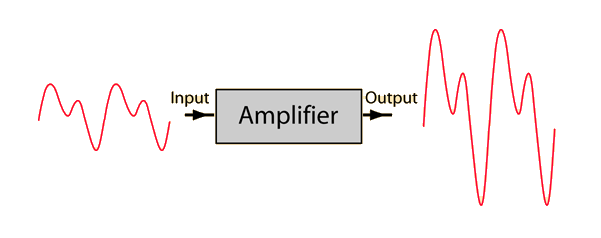
Are Tube Amps Worth It?
Tube amplifiers have been around for over a century and are still popular among audiophiles and musicians today. While tube amps have a uniquely warm sound, they can also be expensive and require more maintenance than solid-state amplifiers. In this article, we’ll explore the pros and cons of tube amps and help you decide if they are worth the investment.
One of the hottest topics in the world of audiophiles and pro-audio is probably the argument over tube amps versus solid-state or transistor models. While the discussion can go in one of two different directions depending on whether you’re talking about home playback systems or instrument amplification, many of the same arguments hold true in both areas of interest. Roadworthiness, feeling and response, and output capabilities can all be disregarded since we’re looking at amplifiers for playback systems rather than instruments.

What is an amplifier Used for?
A speaker can be driven effectively by an amplifier, which is an electronic component that increases the amplitude of an electrical signal (audio waveform). Whether it’s the tiny speakers in your cell phone, your home theatre system, the speakers on your TV, or a sizable PA system, we use amplifiers in every audio reproduction system. Various factors, such as power, impedance, and sensitivity, as well as more specialized features, like connectivity options, tonal qualities, and other things that might be necessary for your needs, determine the amplifier type we use for each of the aforementioned applications.
If your source device or speakers aren’t powered, for example, you’ll need a standalone power amplifier when setting up a playback system for your home theatre, car, or vinyl listening station. If you want to further hone the sound you hear and have complete control over your system, you can add additional components to such systems, such as preamps (mostly for intentional tonal colouration), crossover systems (for determining the frequency split between different speakers), and other signal processors like equalizers or dynamic processors (compressors, limiters, etc.), but for the purposes of this discussion, we’ll stick with the goal of using a power amplifier.
In case you’re interested in learning more about amplifiers in general, we’ve also put together the following amp recommendations

Preamps and power amps
Preamplifiers and power amplifiers both serve the purpose of amplifying an electronic signal. A power amp brings the signal to a level suitable for driving speakers, whereas a preamplifier cleans and amplifies a signal to the point where additional signal processors or a power amp can accept it. It really depends on what you want to accomplish, but you can frequently find units that accomplish both tasks at once.
When examining the use of tubes and valves, their impact on audio quality and characteristics is greatly influenced by the stage at which they are found in the signal path. Signal processors are more frequently found on preamps than on power amps.
The tonal characteristics we frequently associate with glass valves can be achieved by using tubes in preamps, whereas using tubes in the power amp stage has a much smaller impact on the sound signature and quality and is primarily used as a volume-boosting tool.
What are tubes?
In essence, tubes—also referred to as valves—are little glass cylinders that support the amplification process. However, doing so may introduce artefacts that change the audio quality of your source signal. These modifications aren’t too drastic; rather, they involve a few small details that give a piece of gear personality. You won’t notice any significant changes in pitch or quality.
How tubes affect tonal qualities
The source signal gains some dynamic and colourful characteristics because the electrical signal goes through a glass valve rather than a transistor. Models and brands vary in these, but the following general observations can be made:
The warmth that a valve amplifier offers is the most obvious distinction between tube and solid-state amplifiers. Compared to a solid-state signal, harsher tones are mellowed, higher frequencies are subdued and given a silky texture, and the overall sound quality is noticeably better. Tube amplifiers gradually and harmonically distort as volume levels rise, producing these smoother sound qualities. Because of their greater output potential, solid-state amplifiers can appear louder than tube amplifiers. For instance, a 50W solid-state amplifier may sound as loud as a 15W tube amplifier. Dynamically, tube amplifiers also offer a much more open range than solid-state amplifiers, which is advantageous for all applications.
Due to the aforementioned reasons, most people prefer the sound of tube amplifiers because they are easier to listen to, accurately represent a dynamic range, and sound overall much more well-rounded and fuller than solid-state amplifiers, which can occasionally sound rather sterile.
which is better
Tube amplifiers are unquestionably superior to solid-state systems in terms of audio quality alone. Although digital signal processing advances are quickly getting closer to replicating tube amplifier characteristics, they aren’t quite there yet.
But here, sound quality isn’t the only issue at hand. There are a few practical considerations that should be made that could make this choice even trickier…
Tube amplifiers are delicate, and even though the kind of amps we’re talking about won’t likely be moved around much if they take a knock, they can still be damaged. This can be a crucial deciding factor if you frequently move your playback system for some reason.
Tubes have a life span. While tube amplifiers used in home entertainment systems aren’t subjected to the same abuse as those used by musicians on stage, the glass valves eventually reach the point where they can no longer be repaired. Your tubes should last a few years, depending on how you use your system, and replacement valves are accessible. It takes some expertise to install new tubes, but that expertise can be acquired.
Tube amplifiers are pricey. Due to the use of vacuum tubes, hand wiring, soldering, and the use of higher-quality parts, tube amplifiers are typically more expensive than their solid-state counterparts. Because of this, extra care is taken with every detail, leading to better builds all around and helping tube amps win the argument for quality.
I mentioned earlier that tube amplifiers have unique qualities of their own. A piece of music will undoubtedly sound different through each amplifier, but even when using the same amplifier, changing out the tubes can significantly alter how things sound through your system. As a result, if you enjoy adjusting equalizer settings or listening to a variety of musical genres, you might prefer a more neutral-sounding solid-state amplifier that gives you the freedom to experiment with signal processors while still being able to predict what to expect. However, once you become familiar with the sound of your tube amplifier, it becomes much simpler to hear musical nuances rather than those of the amplifier.
Which amp type is best for me?
Although I believe solid-state amplifiers sound better overall than tube amplifiers, it ultimately depends on your goals.
A tube amp might be a bit overkill if you’re looking for something to use for your home theatre. I don’t really see the benefit of purchasing a tube amp unless you’re using a 7.1 system or larger with extremely high-end speakers. Although the dynamic range will be excellent for films, it is not really required.
A tube amplifier will unquestionably meet your needs if you value high-quality goods and genuine experiences. However, great quality comes with great responsibility because these amps, especially higher-end models, need to be maintained.
are tube amps worth it?
The value of tube amplifiers will depend on your personal needs as a customer and your financial situation. We’d suggest investing in a tube amp if you have deep pockets and don’t care about cost because of the warm, clear sound they produce. However, this does not imply that all tube amplifiers will outperform all solid-state amplifiers.
Before you invest a significant amount of money into something that is susceptible to the diminishing returns that we frequently see from high-end audio products, we typically advise starting out with a solid-state amplifier if you’re just getting started with audio.
Once one has invested in high-end audio gear, tube amplifiers are typically seen as the “end product.” The majority of the time, investing in better speakers or headphones will result in a performance boost that is more noticeable. But if you’ve already spent money on high-end audio gear, switching to tube amplifiers might be the last step to completing your ideal setup.
